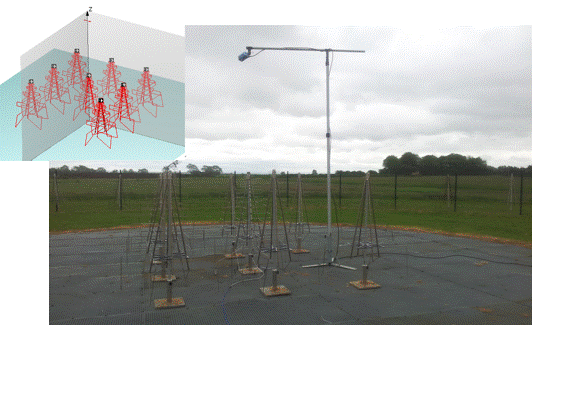Daily Image
14-05-2014Proven reliability of large structure simulations
| Submitter: | Benedetta Fiorelli |
| Description: | The SKA Low Frequency Aperture Array will consist of large arrays of antennas. Each station, as we call them, will be populated by 256 antennas, covering an area with a diameter of 35m. Measuring and testing such an instrument is a challenging task that involves a high level of complexity. In this context, a large part of the design effort relies on simulations. The (irregular) LFAA array configuration is specified to be dense at the low end of the operational bandwidth. It requires a full-wave approach to be properly represented, including the effect of mutual coupling between antennas. In recent years, as a result of increasing computational capability and the development of fast algorithms, most of the available commercial codes are becoming capable of simulating very large structures. That given, controlling and understanding the EM behaviour of large irregular arrays with a high level of reliability is not straightforward. Validation of the simulation work is essential and represents a big challenge when facing the issue of characterization. Due to the size of the antenna at the bandwidth of interest (50-450 MHz) for LFAA, the most accessible and repeatable method is to perform array measurements in the near-field region. With this approach, some measurements have been performed in Cambridge on a small dense regular array (see image). The measurement concept is relatively simple, but the realization brings in a lot of uncertainties. It is worth noticing that, in spite of the windy and rainy weather during the measurement campaign, we achieved very good match of measurements with simulations, proving the reliability of our simulations in a dense array context. Detailed results have been presented at EuCAP 2014 in April. |
| Copyright: | B. Fiorelli |
| Tweet |  |
